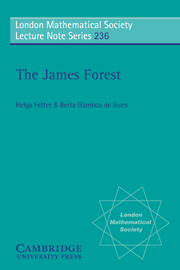Prologue
Published online by Cambridge University Press: 19 March 2010
Summary
When Stefan Banach introduced in the 30's the spaces which now carry his name, his aim was to provide a convenient framework for the solution of equations in infinitely many variables. Few examples of such spaces were known at that time: sequence spaces, function spaces.
The structure of Banach spaces was not as rich as that of Hilbert spaces (the inner product was missing), but it was general enough to handle a large variety of situations. The distinction was made, at an early stage, between reflexive and non-reflexive Banach spaces. The former enjoyed weak compactness properties, a tool which in many cases could replace inner products.
So Banach spaces developed smoothly, and many general theorems were proved, first by Banach himself, then by many others, for instance Steinhaus, Saks, and later Grothendieck (1950), Dvoretzky (1963).
The last open question, at this stage of the theory, was the existence of a basis, for separable spaces: it would have been nice to have some replacement tool for the so-convenient hilbertian basis, and the easy expansions it allows. The question was not too embarrassing, however: all known spaces had bases, and, despite the lack of success of Grothendieck on this question, one thought that some young and talented guy would soon come to settle the matter.
Unfortunately, before anyone could do it, and before the logicians could prove it undecidable, Per Enflo, in 1972, constructed an example of a separable Banach space with no basis. The opening of Pandora's box had awful consequences, and a lot of unexpected devils flew away: even the most ordinary spaces showed signs of disease, with pathological topologies and strange subspaces.
- Type
- Chapter
- Information
- The James Forest , pp. x - xiiPublisher: Cambridge University PressPrint publication year: 1997



